Opioid Crisis Statistics: The opioid crisis has emerged as a significant public health issue, affecting communities worldwide.
It refers to widespread misuse and addiction to opioid drugs, including both prescription painkillers and illicit substances like heroin and fentanyl.
The consequences of the opioid crisis are devastating, leading to a surge in overdose deaths, strained healthcare systems, economic burdens, and societal challenges.
Table of Contents
- Editor’s Choice
- Opioid Crisis Statistics – Opioid Use Prevalence
- Opioid Crisis Statistics – Overdose Deaths
- Opioid Crisis Statistics – Prescription
- Opioid Crisis Statistics – Illicit Opioid
- Opioid Crisis Statistics by Age and Gender
- Opioid Statistics by Race/Ethnicity
- Heroin Use and its Consequences by Opioid Crisis Statistics
- Recent Developments
- Key Takeaways
- FAQs
Editor’s Choice
- The Global Opioids Market size is expected to be worth around USD 29.5 Billion by 2033 from USD 22.2 Billion in 2023, growing at a CAGR of 2.9 % during the forecast period from 2024 to 2033.
- About 79,117 Americans died from drug overdose between January and September 2022.
- In 2021, about 81,155 people died during the first nine months of 2021, but still 50% higher than pre-2020 levels.
- A total of 5,360 apparent opioid toxicity deaths occurred so far in 2022 (January – September) in Canada.
- In 2020, there were approximately 69,710 drug overdose deaths in the United States, with opioids involved in about 69.5% of those cases.
- In 2022, an estimated 9.7 million Americans misused prescription pain relievers.
- Men have a higher rate of opioid overdose deaths as compared to women, with men aged 25-54 having the highest rate.
(Source: The Commonwealth Fund, CDC)
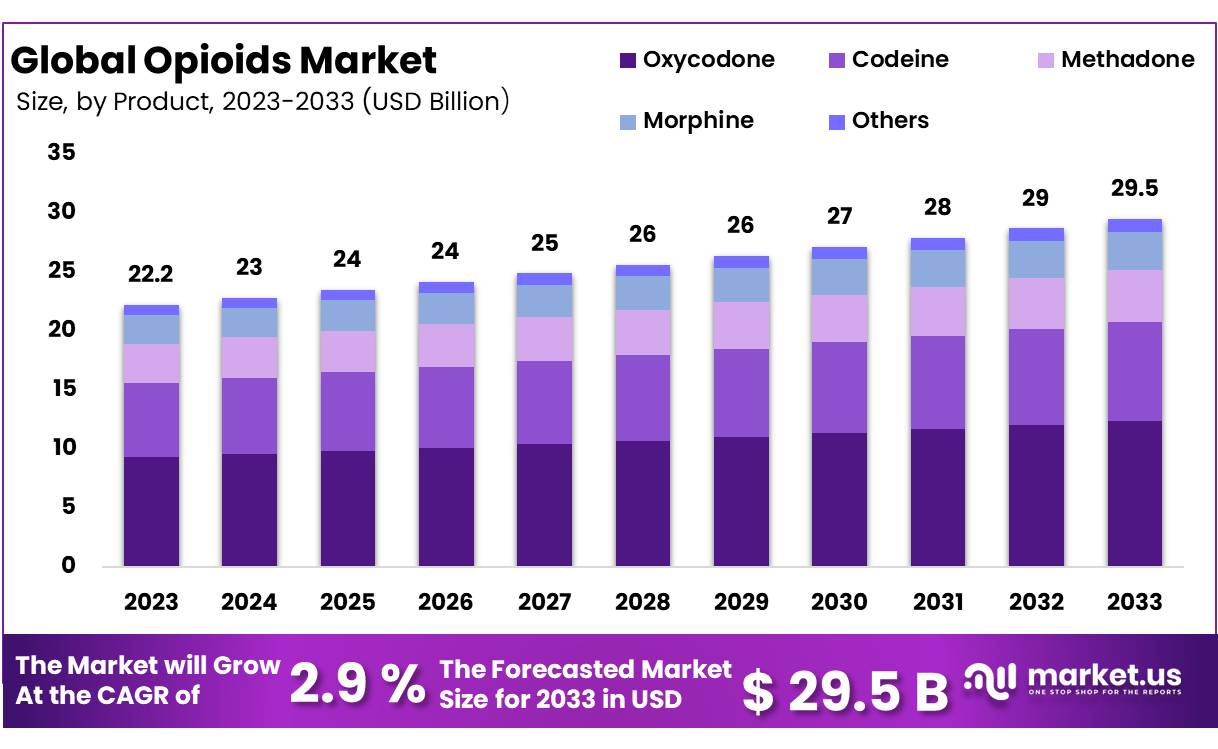
All Suspected Opioid-Related Incidents by Severity Category: 2023 Q1
| Jan | Feb | Mar | Total | |
| DOAs Incidents | 27 | 22 | 21 | 70 |
| DOAs % | 2% | 1.8% | 1.5% | 1.8% |
| Acute Overdose Incidents | 776 | 718 | 837 | 2,331 |
| Acute Overdose % | 58.7% | 57.8% | 58.9 | 58.5% |
| Opioid Intoxicated Incidents | 207 | 216 | 270 | 693 |
| Opioid Intoxicated % | 15.7% | 17.4% | 19.0% | 17.4% |
| Opioid Withdrawal Incidents | 71 | 59 | 48 | 178 |
| Opioid Withdrawal % | 5.4% | 4.8% | 3.4% | 4.5% |
| Other Opioid-Related Incidents | 240 | 227 | 244 | 711 |
| Other Opioid-Related % | 18.2% | 18.3% | 17.2% | 17.9% |
| Total | 1,321 | 1,242 | 1420 | 3,983 |
Opioid Crisis Statistics – Opioid Use Prevalence
- In the US, an estimated 9.7 million people aged 12 or older misused opioids in 2020 – representing 3.6% of the population.
- In 2020, approximately 16.8 million adults aged 12 or older reported using prescription opioids for nonmedical reasons at least once in their lives – accounting for 6.2% of the population.
- In 2020, an estimated 2.0 million individuals aged 12 or over with opioid use disorder comprised 0.7% of the population.
- At least 56.2% of individuals aged 12 or over who misused opioids within the past year reported obtaining them from family or friends without their explicit permission, while 21.8% purchased them directly from healthcare professionals.
- In 2020, approximately 8.7 million adults in the US received high doses of opioid medication prescription.
- 2020 data indicates that 1.8% of adolescents aged 12-17 reported nonmedical use of prescription opioids over the last year.
(Source: NSDUH)
Opioid Crisis Statistics – Overdose Deaths
- In the United States, opioid overdose deaths have been rising steadily over the past two decades.
- According to the Centers for Disease Control and Prevention (CDC), from 1999 through 2019, approximately 5000,000 people died from opioid overdoses.
- In 2020, the United States saw a marked spike in overdose deaths driven by synthetic opioids like Fentanyl.
- Fentanyl is an extremely potent synthetic opioid that is up to 100 times stronger than morphine and often linked with opioid-related deaths.
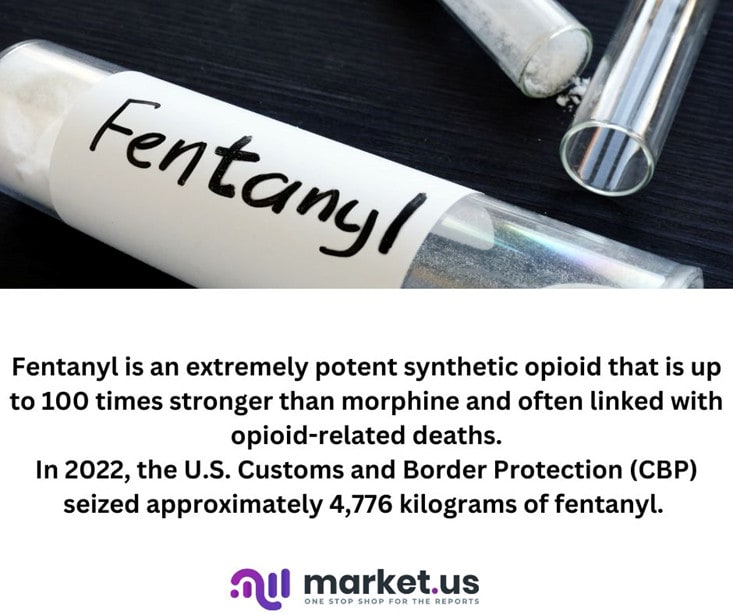
Opioid Crisis Statistics – Prescription
- In 2022, healthcare providers across the US issued over 153 million opioid prescriptions.
- Between 1999 and 2021, prescription opioid sales quadrupled, contributing to the opioid crisis.
- Prescription opioids were responsible for over 49% of opioid overdose deaths in 2019 in the US.
- In 2022, more than 14,000 deaths in the US were attributed to prescription opioid overdoses.
- United States residents consume roughly 80% of the global opioid supply despite only representing approximately 5% of the global population.
- An estimated 9.7 million people misused prescription opioids in the United States in 2021.
- In 2022, nearly 2 million individuals in the US had an opioid use disorder relating to prescription opioids.
- About 21-29% of patients prescribed opioids to manage chronic pain misuse them.
(Source: CDC, National Institute on Drug Abuse)
Opioid Crisis Statistics – Illicit Opioid
- Synthetic opioids were implicated in 69.5% of opioid overdose deaths across the U.S. in 2022.
- In 2022, the U.S. Customs and Border Protection (CBP) seized approximately 4,776 kilograms of fentanyl.
- Fentanyl is an extremely potent synthetic opioid. From 2015 to 2020, overdose deaths caused by Fentanyl increased by an astounding 40% across the US.
- Heroin is an illicit opioid that is widely abused. An estimated 0.5 million Americans aged 12 or over reported past-year heroin use in 2021, leading to 14,019 overdose deaths that year.
- As of 2022, heroin accounted for roughly 20% of opioid-related deaths, while synthetic opioids (primarily fentanyl) comprised 68%.
(Source: National Institute on Drug Abuse CDC)
Opioid Crisis Statistics by Age and Gender
- Opioid use among adolescents aged 12-17 declined from 7.8% in 2002 to 4.9% by 2020.
- As per recent research, prescription opioid misuse peaks among individuals aged 26-34 years of age with 5.6% reporting misuse within the last year.
- 7.6% of young adults aged 18-25 misused opioids within the last year.
- Age 25-44 has the highest opioid overdose death rate with 35.2 deaths per 100,000 people expected in 2020.
- Opioid overdose deaths among adults aged 45-64 have increased from an annual incidence rate of 6.3 in 1999 to 33.5 deaths per 100,000 by 2020.
- 1.1% of adults aged 65 or older reported misusing opioids within the past year.
- Men have higher opioid overdose death rates than women. In 2020, male opioid overdose deaths per 100,000 were 39.8 while female deaths per 100,000 was 22.2 deaths.
- Women are more likely than men to receive prescription opioids, with a higher prevalence of chronic pain conditions.
(Source: National Survey on Drug Use and Health, CDC)

Opioid Statistics by Race/Ethnicity
- In 2021, the death rate from opioid poisoning was around 33.5% per 100,000 population among Black, non-Hispanics.
- The death rate from opioid poisoning was around 28.4% per 1000,000 populations among White, non-Hispanics.
- In 2021, the death rate from opioid poisoning was around 2.6% per 100,000 population among Asian, and non-Hispanics.
- The death rate from opioid poisoning was around 9.7% per 100,000 populations among Native Hawaiian or Other Pacific Islander, non-Hispanics.
(Source: Statista)
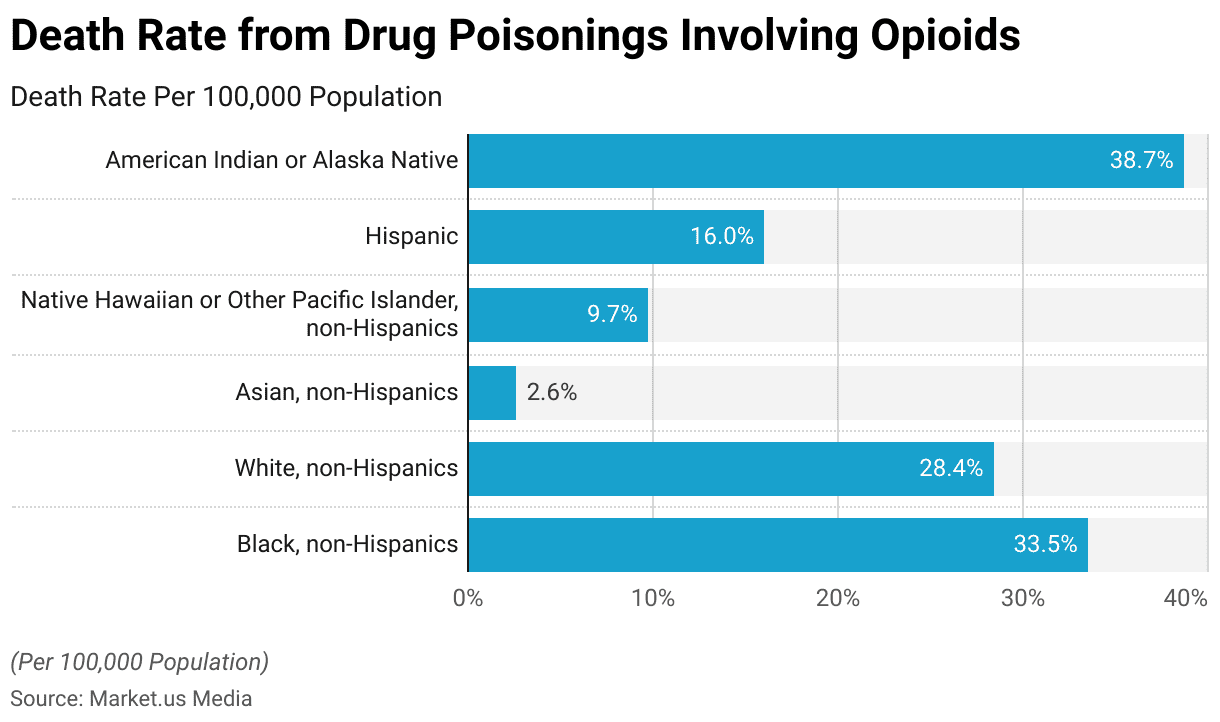
Heroin Use and its Consequences by Opioid Crisis Statistics
- In the United States, opioids were involved in over 69,000 overdose deaths in 2020.
- Naloxone is an opioid overdose reversal medication and was utilized to reverse over 46,000 opioid overdoses in 2020 alone in the US alone.
- In 2019, approximately 9% of new HIV diagnoses in the US could be linked to injection drug use.
- Hepatitis C transmission has also been associated with injection drug use. An estimated 50,300 new Hepatitis C virus infections occurred in 2019 in the US alone primarily among people who inject drugs.
- In the US, NAS rates have significantly increased from 1.5 cases per 1,000 hospital births in 2004 to 8.0 cases per 1000 hospital births by 2021.
- In 2022, an estimated 10.10 million people worldwide used heroin at least once during their lifetimes.
- In 2020, approximately 0.4% (about 1 million people) reported heroin use within the past year in the US.
- An estimated 25% of those who take up heroin become dependent on it.
- In 2020, an estimated 626,000 individuals aged 12 or older had a heroin use disorder in the US.
(Source: CDC, UNODC, NSDUH)
Opioid Crisis Statistics – Prevalence of Crisis by Country
United States
The United States has been heavily affected by the opioid crisis, with a high number of opioid-related overdoses and deaths. Prescription opioids, such as oxycodone and hydrocodone, as well as illicit opioids like heroin and fentanyl, have contributed to the crisis.
- According to the Centers for Disease Control and Prevention (CDC), in 2019 there were over 70,000 drug overdose deaths, of which nearly 70% involved opioids.
- Healthcare providers across the U.S. wrote nearly 153 million prescriptions for opioids last year – translating to 46.7 prescriptions per 100 persons.
- In 2021, around 80,411 people died from opioid overdoses in the United States.
- In 2021, the death rate from opioid overdose was 24.7 per 100,000 deaths.
- In 2021, the United States recorded over 100,000 overdose deaths for the first time, with a tally of 103,598 deaths (preliminary numbers by the Centers for Disease Control and Prevention).
- Overdose deaths in the U.S. increased from around 67,800 in 2018 and 71,100 in 2019 to 92,500 in 2020 due to the pandemic.
- In 2021, around 70,600 people in the United States died from a drug overdose that involved fentanyl.
Number of opioid overdose deaths in the United States
- 2015: Approximately 33,091 deaths
- 2016: Approximately 42,249 deaths
- 2017: Approximately 47,600 deaths
- 2018: Approximately 46,802 deaths
- 2019: Approximately 49,860 deaths
- 2020: Approximately 69,710 deaths
- 2021: Approximately 80,411 deaths
(Source: Statista)

Canada
Canada experienced a significant opioid crisis, with a rise in opioid-related deaths in recent years. The crisis is driven by the presence of illicitly manufactured opioids, including fentanyl, in the drug market.
- In 2020, there were 6,214 apparent opioid toxicity deaths in Canada, representing a significant increase compared to previous years.
- In 2020, fentanyl and fentanyl analogs were involved in approximately 87% of opioid-related deaths where the cause was known.
- Between April 2019 and March 2020, there were 27,595 opioid-related emergency department visits in Canada.
- In 2019, there were 16.3 million opioid prescriptions dispensed in Canada, with a rate of 44.9 opioid prescriptions per 100 population.
- In 2020, First Nations individuals accounted for 40% of all opioid-related deaths in Ontario, despite representing only 3% of the population.
- During 2021, there were a total of 7,169 deaths from opioid overdose in Canada, 2,262 of which occurred in the province of British Columbia.
- In 2021, there were a total of 7,560 deaths in Canada due to opioid overdose.
- Approximately 29% of these deaths occurred among individuals aged 30 to 39 years.
- In 2021, there were a total of 6,164 opioid-related poisoning hospitalizations in Canada. Among these hospitalizations, approximately 707 occurred specifically among males aged 30 to 39 years.
(Source: Statista, Public Health Agency of Canada)

Australia
- According to Australian Bureau of Statistics (ABS) data for 2020, there were 1,024 opioid-induced deaths – an increase from previous years.
- In 2021, a National Drug Strategy Household Survey discovered that approximately 3.8% of Australians had misused pharmaceutical opioids within the last year.
- According to the Australian Criminal Intelligence Commission’s Illicit Drug Data Report 2019-20, there has been an increase in detections of Fentanyl during drug seizures.
- In 2021, according to Australia’s National Opioid Pharmacotherapy Statistics Annual Data (2021), 16,318 opioid-related overdose presentations to Australian hospitals occurred between 2021.
- According to Australia’s National Opioid Pharmacotherapy Statistics Annual Data (2019), around 53,000 Australians received opioid substitution therapy in 2018-2019.
United Kingdom
The United Kingdom has been grappling with a growing opioid crisis, primarily driven by the misuse of prescription opioids and the increasing availability of illicit opioids. Overdose deaths involving opioids have been on the rise in recent years.
- In 2020, there were 4,561 deaths involving opioids – the highest number ever recorded and an increase of 3.8% year-on-year.
- According to NHS Business Services Authority data, between April 2018 and March 2019, nearly 2 million people were prescribed opioid painkillers for long-term use in England alone.
- According to the Crime Survey for England and Wales, an estimated 115,000 individuals between 16-59 reported using heroin in 2020/2021 – marking an uptick from previous years.
- In 2020, fentanyl and its analogs accounted for 69% of drug poisoning deaths in England and Wales.
- The largest number of deaths from opiate drug poisoning was recorded in 2020, with 2,263 deaths due to opiate poisoning.
(Source: Office for National Statistics-UK, Statista)
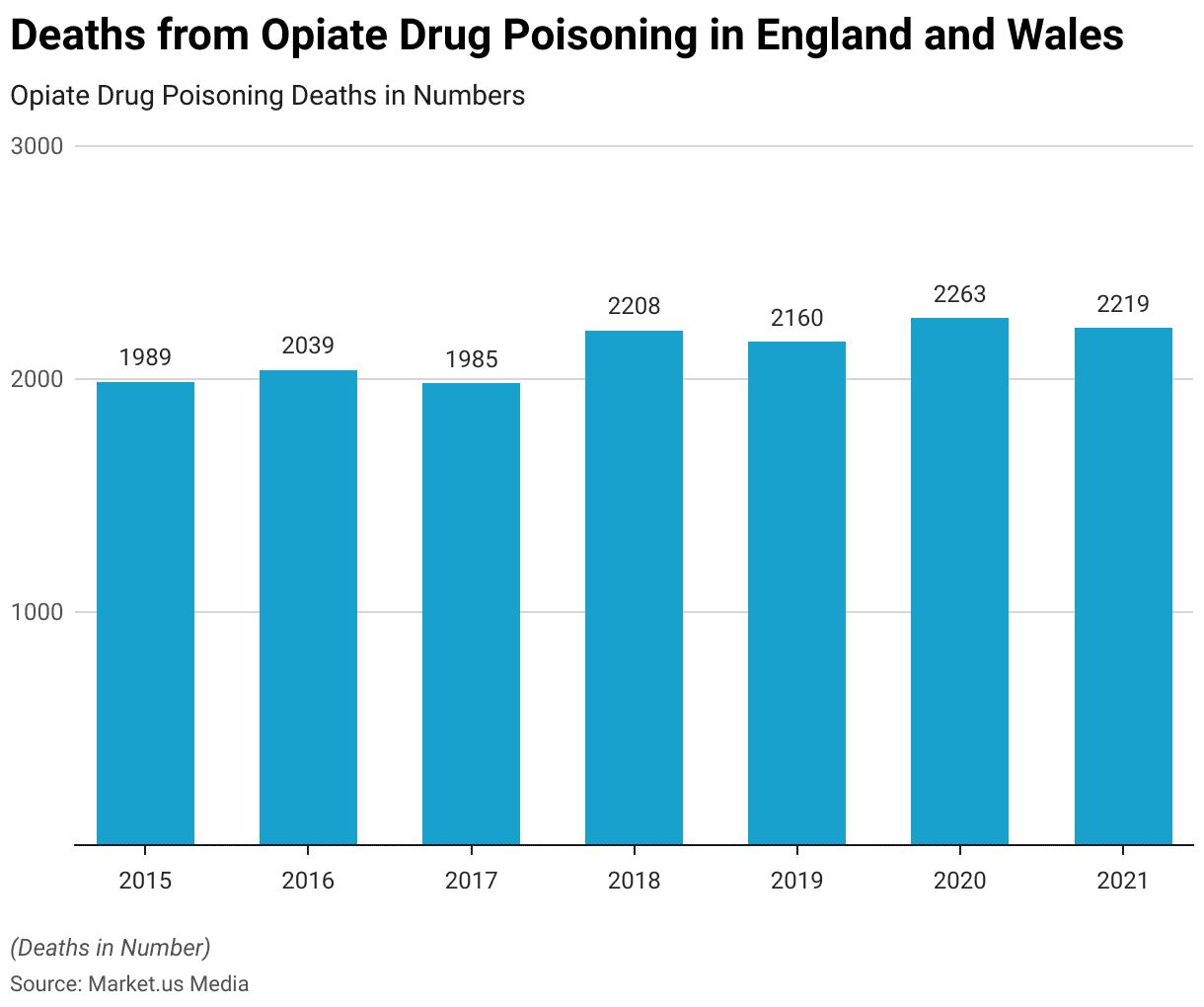
Germany
Germany has seen a rise in opioid-related deaths, mainly associated with the use of prescription opioids and heroin. The country has implemented various measures to address the crisis, including increasing access to addiction treatment.
- In Germany in 2022, 1,401 drug-induced deaths were recorded, and opioids accounted for the bulk of them.
- In 2021, the defined daily dose (DDD) per 1,000 inhabitants per day for opioids was 5.9.
- In 2021, there were 79,526 patients receiving OST in Germany.
- In 2021, there were 3,321 naloxone administrations reported in Germany.
- In 2021, there were 113,006 cases of drug-related treatment reported in Germany. Opioids, including heroin and prescription opioids, are a significant factor leading individuals to seek treatment.
(Source: EMCDDA)
Sweden
Sweden has experienced an increase in opioid-related deaths, primarily attributed to the use of illicit opioids like fentanyl. The country has also seen a rise in the misuse of prescription opioids.
- In 2020, there were 647 drug-related deaths; opioids played a pivotal role in these fatalities.
- In 2020, there were 355 deaths involving fentanyl or its analogs.
- According to a survey conducted in 2018, around 1.5% of the Swedish population aged 16-64 had misused prescription opioids in the past year.
- In 2020, there were 74 deaths involving heroin.
(Source: Public Health Agency of Sweden)
Number of drug-related deaths in Sweden
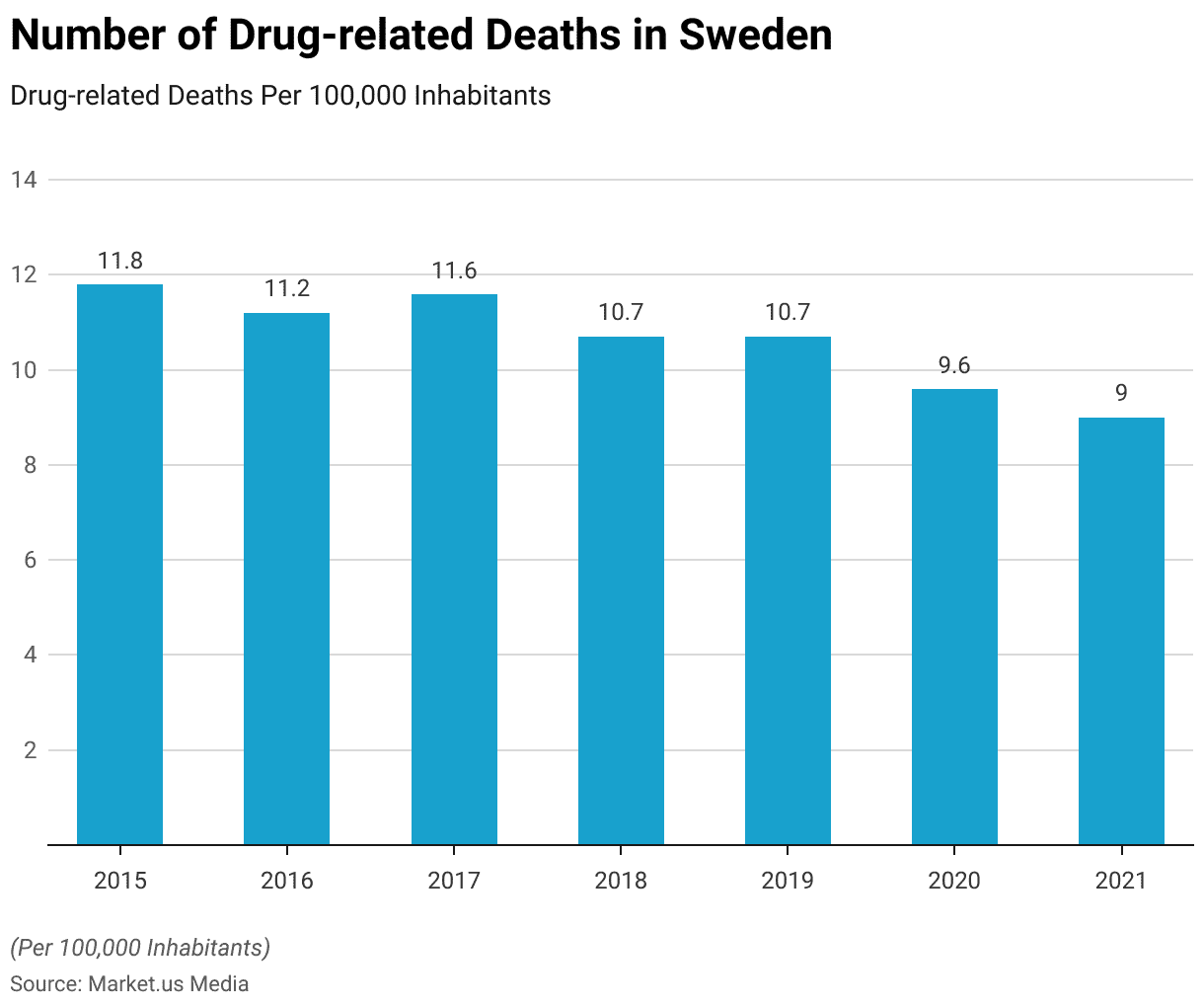
Recent Developments
Acquisitions and Mergers:
- Rehab Solutions acquired the Opioid Recovery Center for $800 million, expanding its network of addiction treatment facilities and strengthening its resources for opioid rehabilitation services.
- AddictionCare merged with Opioid Wellness Clinic, forming a strategic alliance to enhance access to opioid addiction treatment and recovery programs, with combined efforts aimed at addressing the opioid crisis.
New Treatment Approaches:
- PharmaTech introduced a novel medication-assisted treatment for opioid use disorder, offering a long-acting opioid antagonist with reduced risk of misuse and overdose, aiming to reach 500,000 patients within the first year.
- TherapyPlus launched a digital therapeutics platform for opioid addiction counseling and support, providing virtual therapy sessions and peer support groups, targeting an enrollment of 100,000 users within 6 months.
Funding for Addiction Services:
- Government agencies allocated additional funding for addiction treatment and prevention programs, with a focus on expanding access to evidence-based therapies and harm reduction services.
- Non-profit organizations received grants and donations to support community-based initiatives for opioid education, naloxone distribution, and overdose prevention efforts.
Regulatory Measures:
- Regulatory agencies implemented tighter restrictions on opioid prescribing practices and opioid distribution, aiming to reduce the availability of prescription opioids and prevent misuse and diversion.
- Legislation was enacted to enhance the monitoring of opioid prescriptions through prescription drug monitoring programs (PDMPs) and to promote safer opioid prescribing guidelines among healthcare providers.
Community Support and Outreach:
- Community organizations and grassroots initiatives organized awareness campaigns and educational events to destigmatize addiction, raise awareness about opioid risks, and promote access to treatment and support services.
- Support groups for individuals and families affected by opioid addiction expanded their reach through in-person and virtual meetings, providing peer support and resources for recovery.
Naloxone Access Programs:
- Naloxone distribution programs were implemented in various settings, including pharmacies, community centers, and public spaces, to provide overdose reversal medication to individuals at risk of opioid overdose.
- Training programs on naloxone administration and opioid overdose response were offered to first responders, healthcare professionals, and community members to improve readiness and response to opioid emergencies.
Data and Research Initiatives:
- Research studies and data analysis efforts focused on understanding the underlying causes of the opioid crisis, identifying risk factors for opioid addiction, and evaluating the effectiveness of different treatment approaches and policy interventions.
Key Takeaways
Opioid Crisis Statistics – The opioid crisis remains a significant public health challenge that requires urgent attention and comprehensive solutions. Its devastating impact on individuals, families, and communities cannot be overstated.
Addressing this crisis demands a multi-faceted approach that includes enhanced education and awareness, improved access to alternative pain management therapies, increased funding for addiction treatment and recovery services, and stronger regulation and monitoring of prescription opioids.
By adopting a comprehensive and compassionate approach, we can strive towards mitigating the opioid crisis and building a healthier, more resilient society for all.
FAQs
The opioid crisis refers to the widespread misuse and addiction to opioid drugs, including both prescription painkillers (such as oxycodone, hydrocodone, and fentanyl) and illicit substances like heroin. It has become a significant public health issue in many countries, including the United States.
Opioid-related overdose deaths have risen dramatically in recent years. In the United States, in 2019, there were approximately 50,000 deaths involving opioids.
Both prescription opioids and illicit opioids have contributed to the crisis. Initially, there was a significant increase in prescription opioid use, leading to addiction and subsequent transitions to illicit opioids like heroin. In recent years, the rise of potent synthetic opioids, such as fentanyl, has further intensified the crisis.
Discuss your needs with our analyst
Please share your requirements with more details so our analyst can check if they can solve your problem(s)



